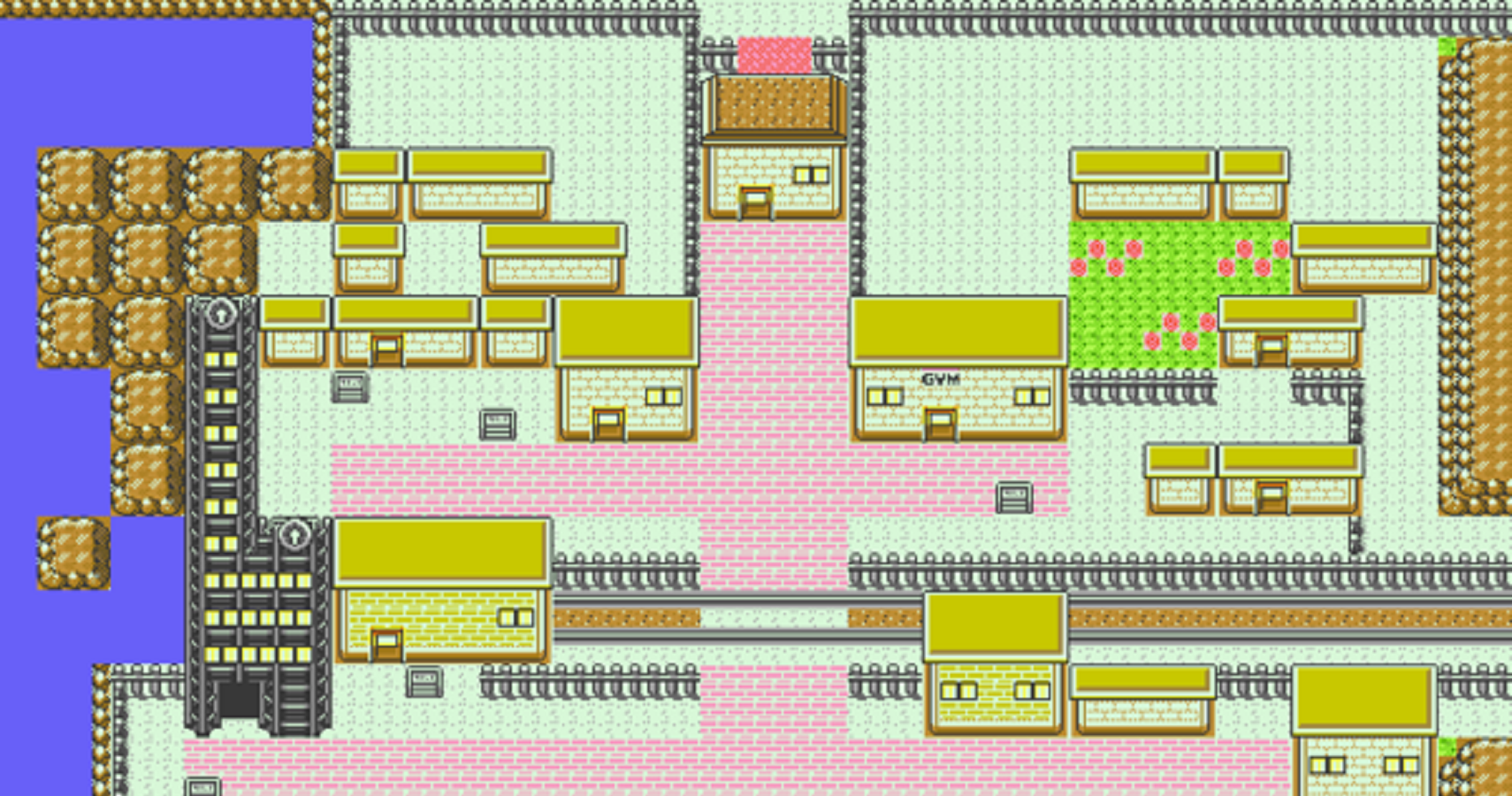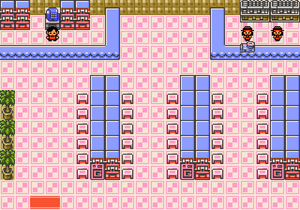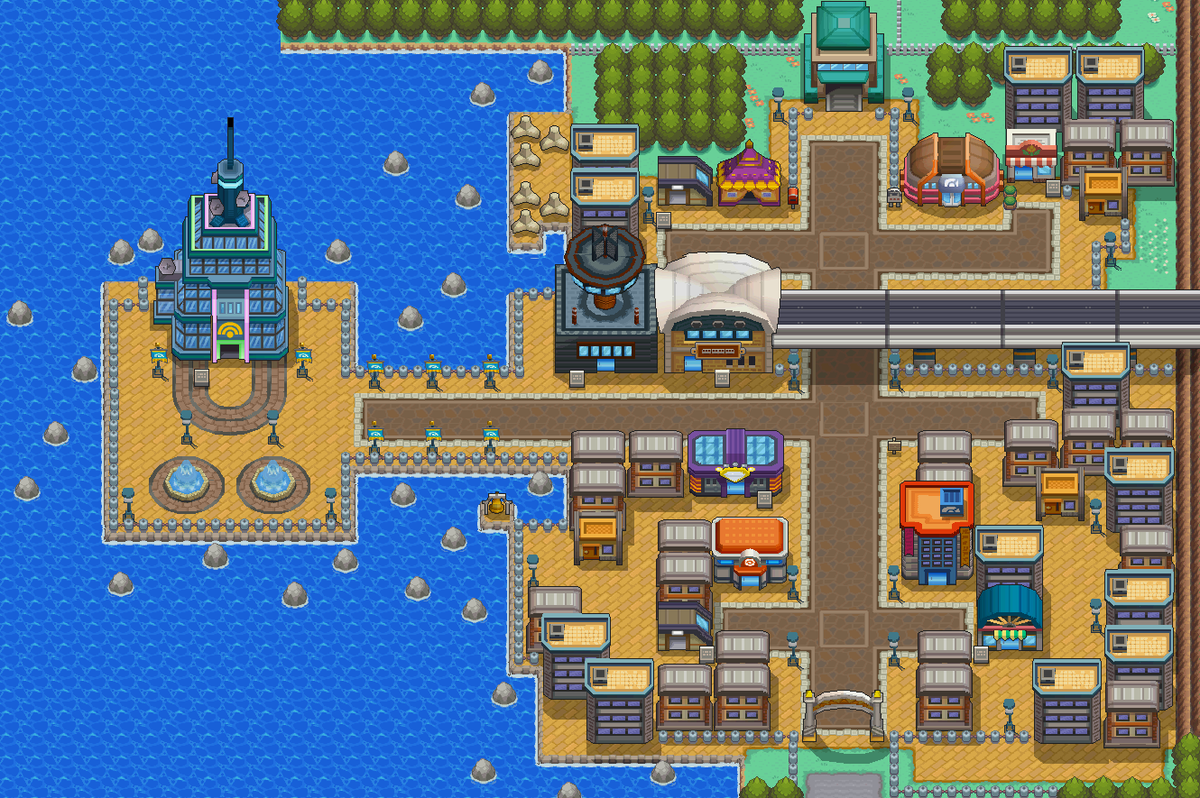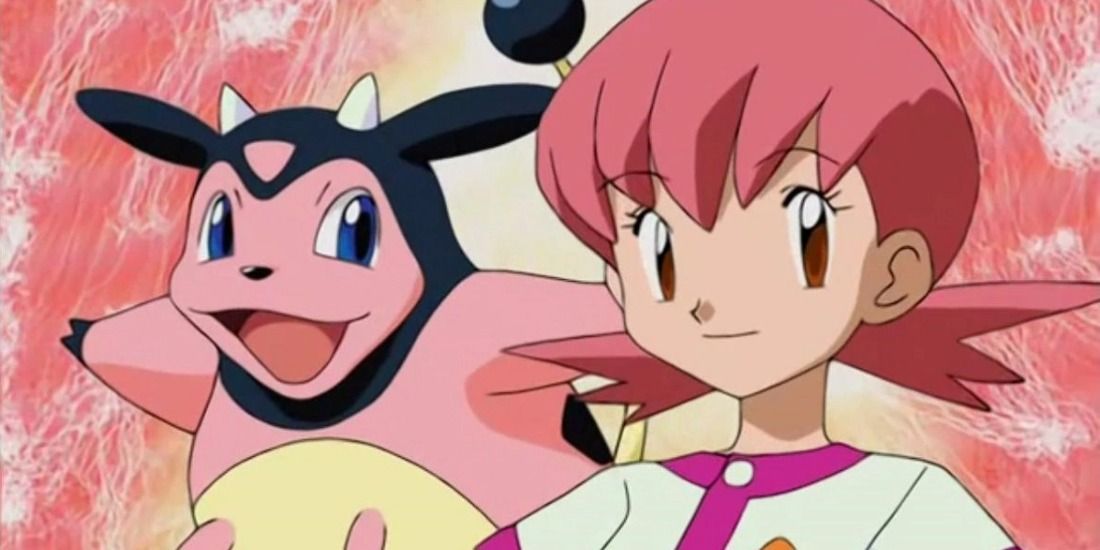Here at TheGamer.com, we recently wrote about how Sootopolis City was the greatest location in Pokemon history. I don’t necessarily disagree, but Sootopolis City has always irked me slightly, because here’s the thing - Sootopolis City isn’t a city. I live in Whitley Bay, and if you squint a little (okay, a lot), we’re basically Sootopolis City. There’s no volcano or legendary sea monster, but we’re a sparsely populated town built upwards around a cul-de-sac of water, and our bedrock is white, craggy cliffs. To repeat, we’re a town. So Sootopolis Town might be the best location in Pokemon history, but when it comes to the best city, it has to be Goldenrod.
Goldenrod is a city in the Johto region, meaning it made its debut in Gen 2 and is therefore held back by some technical limitations. I won’t lie and say you can’t notice - a Gen 8 Goldenrod City would feel very different - but one of the ways it overcame this was sheer scale. In part because of said technical limitations, most locations in early Pokemon games are small and sparse. Goldenrod flips the script, offering up a huge location full of buildings. Some are just filler and can’t be entered, but there are several key locations in Goldenrod that establish it as Pokemon’s best ever city.
It’s a vibrant city busy with life, activity, and places that still feel massive once you’re inside. I’ve lived in three different city centres - sure, they’re loud and cramped and the lights never fully go out, but they feel alive. I still miss city life, and that’s why when it comes to Pokemon cities, I can’t give the title to a little Whitley Bay-style town. I love where I live, but it’s not a city.
Let’s do a whistle-stop tour first. Goldenrod City has: a bike shop, a department store, a train station, an explorable radio tower, an arcade, a flower shop, an underground tunnel, a name rater, a friend rater, and Bill’s house, along with the usual gym and PokeCentre combo.
The train station is especially interesting, as it takes players to Saffron City in the Kanto region. Kanto has a few bigger-than-average locations (Fuchsia and Celadon), but Saffron is the closest comparison to Goldenrod, and it feels like Game Freak built on Saffron’s groundwork to come up with something much more alive for Gen 2. The main reason the train station is so important, though, is because it establishes each location - even the ones without stations themselves - as being part of a wider world.
It sometimes feels like all Pokemon cities are isolated, and not just in the literal way Sootopolis is. Characters never leave their towns and barely interact with the world outside their doorsteps. The reason everyone keeps their doors open and are happy for you to wander in is because they’re so damn lonely. Only you, the bravest ten-year-old the world has ever known, dares to actually trek across the long grass of Johto. I know there are actual trainers out there too, but it feels like a big split; trainers wander the world, and civilians stay in their comfy little homes. Having a train station helps sell the connections between each place as being deeper than just various trainer-filled obstacle courses designed to make you the very best, like no one ever was.
The bike shop meanwhile is one of the most important stores in the game, since as soon as you get your bicycle, you’ll end up riding it everywhere. You even get it for free, because you do such a good job of advertising the wonders of bike riding. Go you. Meanwhile, the arcade represents the carefree style of gambling that used to exist in video games, where no real-world wallets were harmed and it was designed to be fun, not extract cash. If you really want to analyse it, there are probably some issues with glorifying and gamifying gambling in this way, setting up impressionable children to believe gambling is always just a harmless lark, but it’s a hell of a lot better than the cold, hard life lessons delivered in loot boxes.
Then there’s the radio tower. At first, you can wander inside and talk to a few of the workers there, but it’s mainly there for foreshadowing. It’s not until right at the end of the game that you must return here and expunge it of Team Rocket’s invasion. That’s another key aspect of Goldenrod’s storytelling; it doesn’t move to your beat. Most of the time, the big stories in each city happen as you arrive, ready for you to save the day. You’re the star, after all. Goldenrod reminds you you’re really just another brick in the wall.
Even the flower shop is more than it appears. I appreciate that it’s on its own, rather than being folded into the department store, meaning Goldenrod has room for the little guy even as big business rolls into town. It’s also where you get the SquirtBottle, which (despite its stupid name) is a crucial item, since it clears Sudowoodo out of the road ahead. There’s no real indication given in the game that that flower shop has the answer either; you just need to wander, and Goldenrod is designed to encourage that, unlike far too many cities in Pokemon that trim out anything deemed inessential.
It’s also the home of Whitney, and love her or hate her, the fact that you instantly remembered her is no small feat given how many gym leaders there are these days. Remember Ramos? Yeah, thought so.
Goldenrod isn’t just the best Pokemon city out there, it’s a city that makes use of every inch of territory it gets. Not by overloading the area with pointless buildings, but by using the towers and the spaces in between them to help tell its story. Not every Pokemon city needs to be as big, but every Pokemon location should be learning lessons from Goldenrod.




